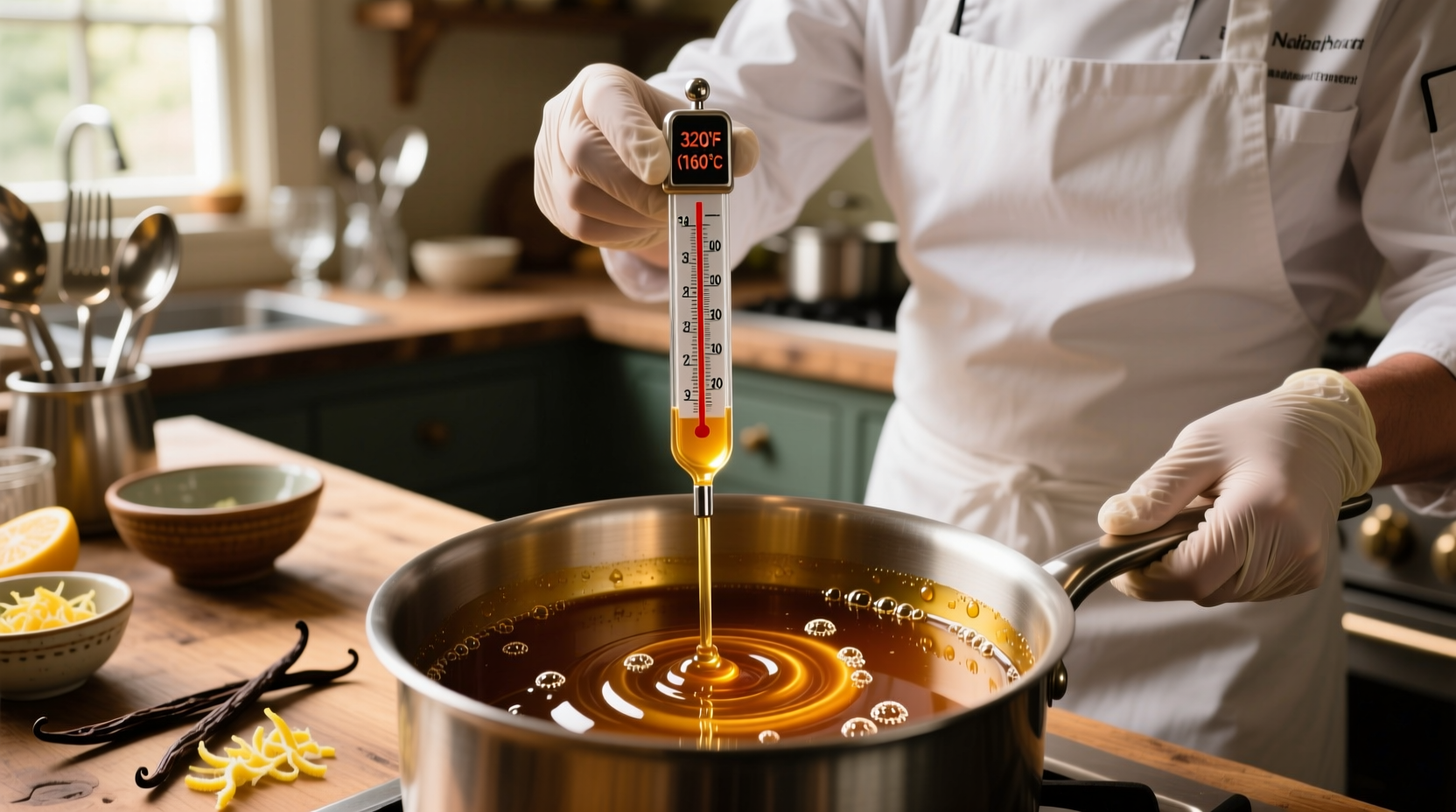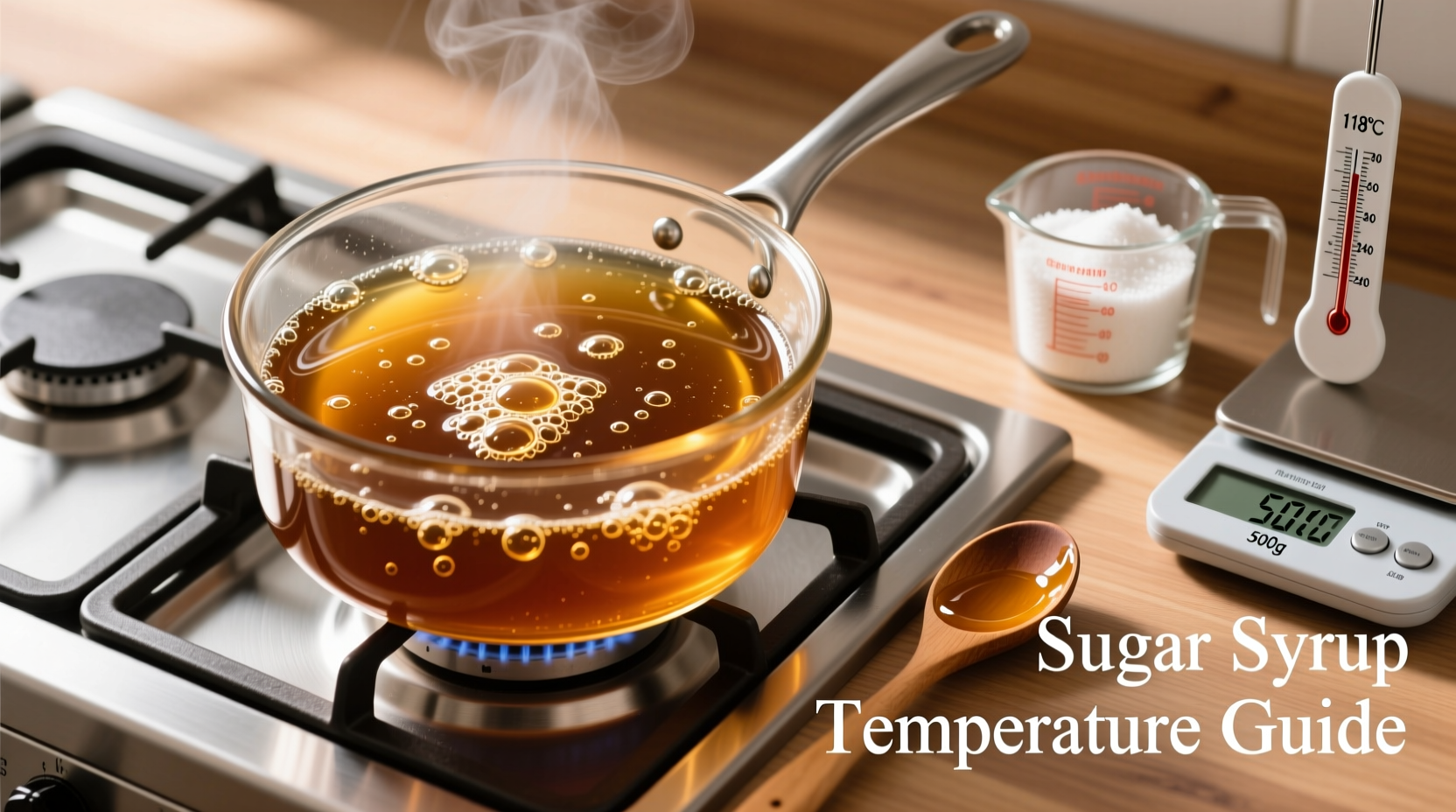Mastering sugar syrup unlocks professional results in cocktails, baking, and preserving. Whether you're crafting a classic daiquiri or sweetening delicate pastries, understanding the science behind this fundamental kitchen staple prevents common pitfalls like crystallization and inconsistent sweetness. This guide delivers chef-tested techniques used in Michelin-starred kitchens, complete with precise ratios, temperature control methods, and storage solutions that maintain quality for months.
Understanding Sugar Syrup Fundamentals
Sugar syrup—also called simple syrup—isn't merely dissolved sugar. Its molecular structure changes during cooking, affecting viscosity and shelf life. The standard 1:1 ratio (sugar to water) creates a versatile syrup ideal for cold beverages, while richer 2:1 "rich syrup" provides intense sweetness for frozen drinks. Historical records show sugar syrup techniques evolved from 17th century European confectionery, where precise temperature control separated professional preparations from amateur attempts.
| Syrup Type | Sugar:Water Ratio | Boiling Point | Best Applications |
|---|---|---|---|
| Simple Syrup | 1:1 | 215°F (102°C) | Cocktails, iced coffee, sorbets |
| Rich Syrup | 2:1 | 220°F (104°C) | Tropical drinks, glazes, preserves |
| Flavored Syrup | 1:1 + add-ins | 215°F (102°C) | Specialty cocktails, desserts |
The Foolproof Cooking Process
Follow these steps for crystal-clear syrup every time:
- Measure precisely: Use a kitchen scale for accuracy—volume measurements vary with sugar density
- Combine ingredients: Place sugar and cold water in a heavy-bottomed saucepan
- Heat gently: Bring to a simmer over medium-low heat without stirring
- Monitor temperature: Insert a candy thermometer when bubbles form at edges
- Remove at 215°F: The syrup should coat the back of a spoon
- Cool rapidly: Transfer to a clean container in an ice bath
Professional kitchens avoid stirring during heating because agitation introduces nucleation points that trigger crystallization. Instead, they swirl the pan gently if needed. For extended shelf life, add 1/16 teaspoon of cream of tartar per cup of syrup—this acid inhibits crystal formation without altering flavor.

Troubleshooting Common Issues
Crystallization: If crystals form, return syrup to heat with 1 tablespoon water per cup of syrup. Stir until dissolved, then reheat to proper temperature. Prevent recurrence by ensuring all equipment is impeccably clean—even a single sugar crystal can trigger chain crystallization.
Cloudiness: Usually indicates premature crystallization. Strain through cheesecloth and reheat to 215°F. Cloudiness doesn't affect flavor but suggests inconsistent texture.
Over-thickening: Dilute with boiled, cooled water (1 tablespoon per cup syrup) and reheat to proper temperature. Syrup continues thickening slightly as it cools.
Storage and Usage Guidelines
Store cooled syrup in sterilized glass containers with tight seals. Properly made simple syrup lasts 1 month refrigerated; rich syrup lasts 6 months due to lower water content. Discard if cloudiness appears or mold develops. For commercial applications, the FDA recommends refrigeration below 40°F (4°C) for all sugar syrups to prevent microbial growth (FDA Food Code 2022, Section 3-502.11).
When using syrup in cocktails, chill both the syrup and glassware first—this prevents dilution from melting ice. For baking, substitute 1 cup syrup for 1 cup sugar plus 1/4 cup liquid in recipes. Always use room-temperature syrup for consistent incorporation.
Flavor Variations for Culinary Creativity
Transform basic syrup into gourmet ingredients with these chef-approved techniques:
- Citrus-infused: Add zest (no pith) during heating; strain before cooling
- Herbal: Steep fresh herbs (mint, basil) off-heat for 20 minutes
- Spiced: Simmer with whole spices (cinnamon, cardamom) for 5 minutes
- Vanilla: Split bean into syrup; steep 12 hours off-heat
For consistent results, always add flavorings after reaching target temperature to preserve volatile compounds. Strain immediately for clear syrups or leave whole for rustic applications. Flavor intensity develops over 24 hours—patience yields superior results.











 浙公网安备
33010002000092号
浙公网安备
33010002000092号 浙B2-20120091-4
浙B2-20120091-4